Bowling ball maintenance is important to achieve maximum performance. Have you ever wondered how much bowling ball maintenance really matters?
Ron Hinkland Jr., CEO of Creating the Difference, did a test with National Bowling Academy to demonstrate how quickly a bowling ball experiences “lane shine.”
Lane shine changes the bowling ball's surface while adding scuff marks, making the bowling ball appear dull and dirty.
The Test
We took a freshly surfaced bowling ball and scanned it using a ball surface scanner. The result was 2500 grit.
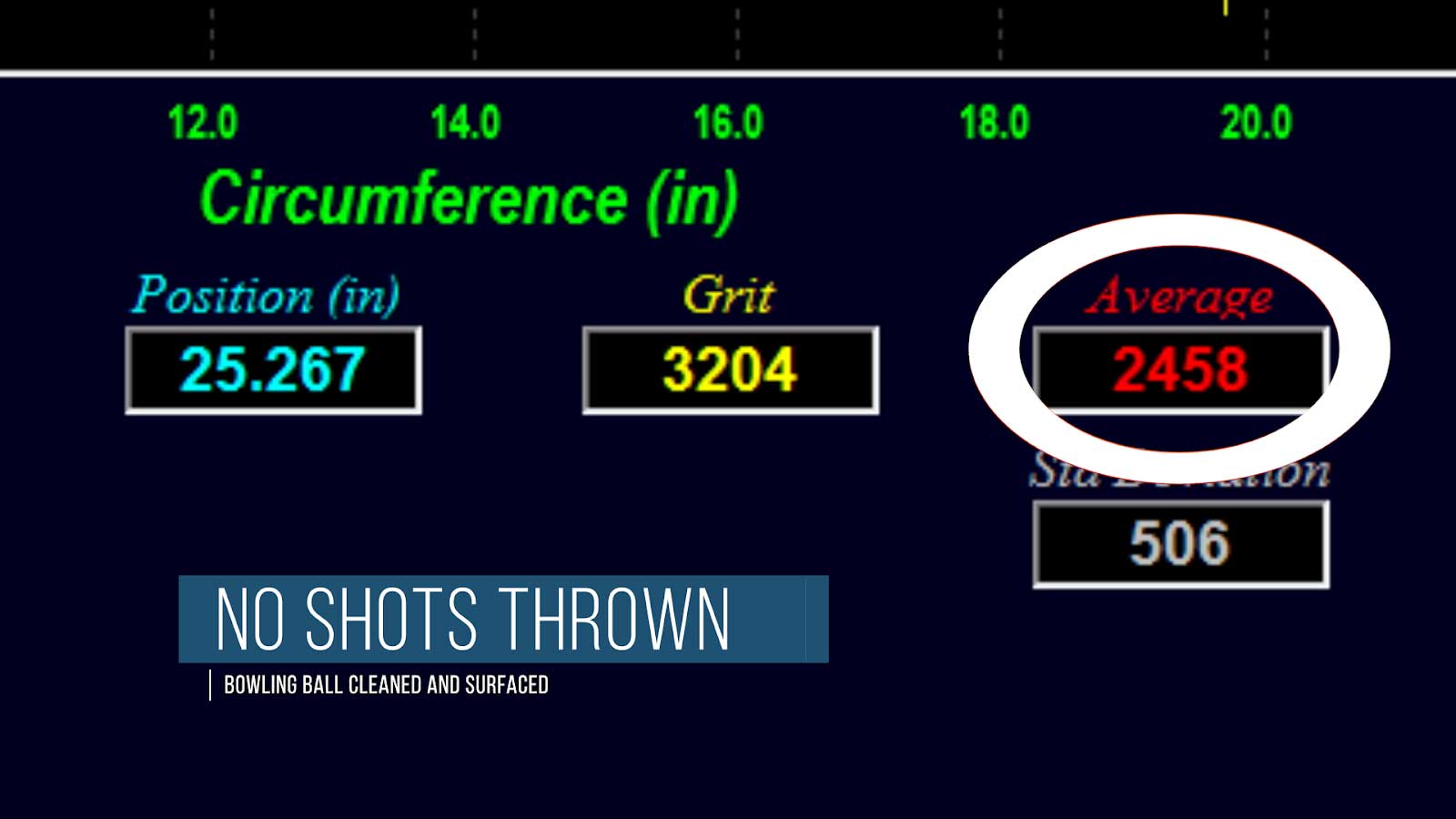
We then took that bowling ball down to the end of the lane and threw it in the gutter. It rolled to the backstop and went through the ball return system.
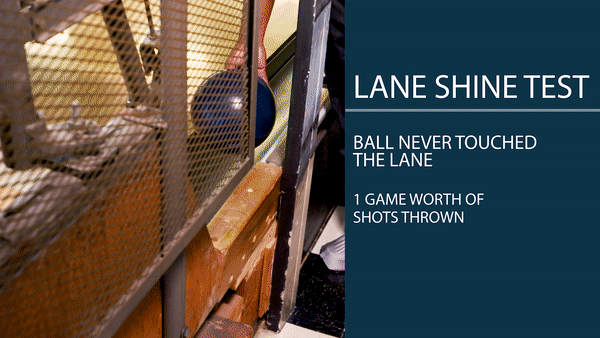
The bowling ball never touched the lane. We repeated this process 13 times.
Below are the results of three separate scans on the same bowling ball after 13 shots.
The three scans are of different areas on the bowling ball.
The third scan is of the bowling ball track, the area that touches the lane, which in this test, it never did.
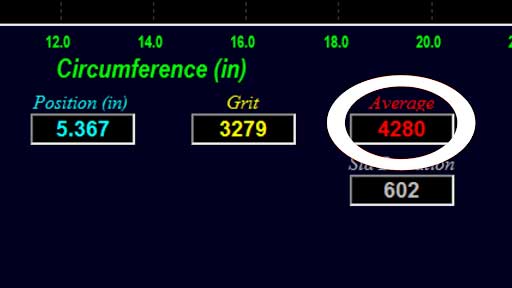
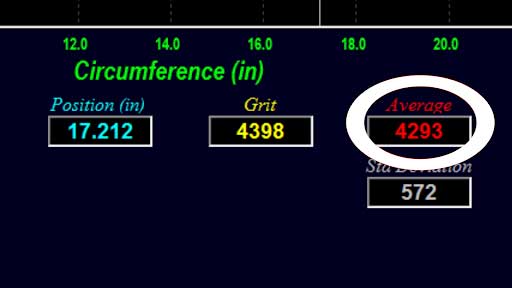
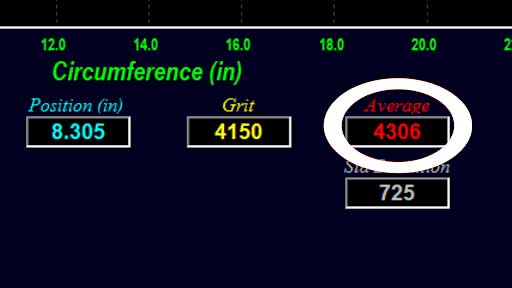
After 13 shots, the bowling ball surface changed from an average grit of 2500 to an average grit of 4300.
This greatly impacts performance. Your bowling ball will now roll longer and hook later.
What Can Be Done About Lane Shine?
First things first, wipe your bowling ball off after every shot thrown with a dry towel, per the new USBC rule.
Bowling ball maintenance needs to happen after you are done bowling every time.
Finally, every three to six games, apply the desired surface to your bowling ball.
Bowling Ball Surface
Cleaning your bowling balls with a bowling ball cleaner after competition or practice is imperative for peak performance.
The surface of your bowling ball is affected every time it touches the lane. Lane shine is created by the ball return systems and also plays a factor in how your bowling ball changes surface.
Keeping all of that in mind, here are some simple maintenance guidelines:
- • Clean your bowling ball before and after the competition with a bowling ball cleaner.
- • Apply the desired surface (sand your bowling ball) every three to six games.
For bowling balls with a duller surface, you’ll want to apply a bowling ball cleaner gel. Apply about a dime- to quarter-size amount and wipe it around the entire surface with a clean paper towel or napkin.
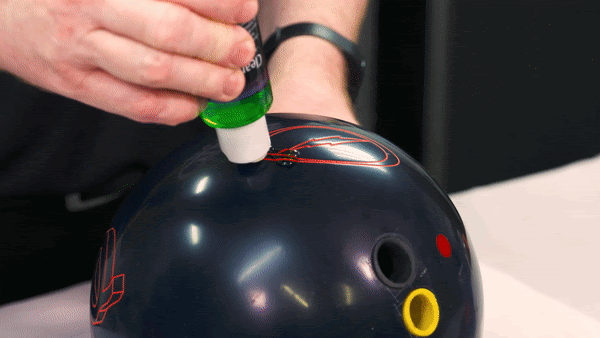
The gel absorbs into the dull bowling ball, releasing the oil on the surface and transferring it to the napkin or paper towel.
If you rub your finger on the bowling ball after application, you’ll notice the cleaner restores the tackiness of the bowling ball’s surface.
Spray cleaners are for bowling balls with shiny surfaces. Apply a couple of sprays to the bowling ball and wipe the entire surface of the bowling ball with a paper towel or napkin to remove the surface oil left on the bowling ball.

This bowling ball cleaner is great for helping your shiny bowling ball travel farther down the lane in drier conditions.
Applying surface to your bowling ball using a sanding pad is vital to your success out on the lanes.
If your bowling ball isn’t reacting the way you’d like, changing the bowling ball surface will help create the ball motion desired to strike more consistently.
Next, let’s learn how to sand a bowling ball.
Get the Numbers and Sand Your Bowling Ball
It’s important to identify what grit your bowling ball was originally sanded at. You can find this information on your ball manufacturer’s website.
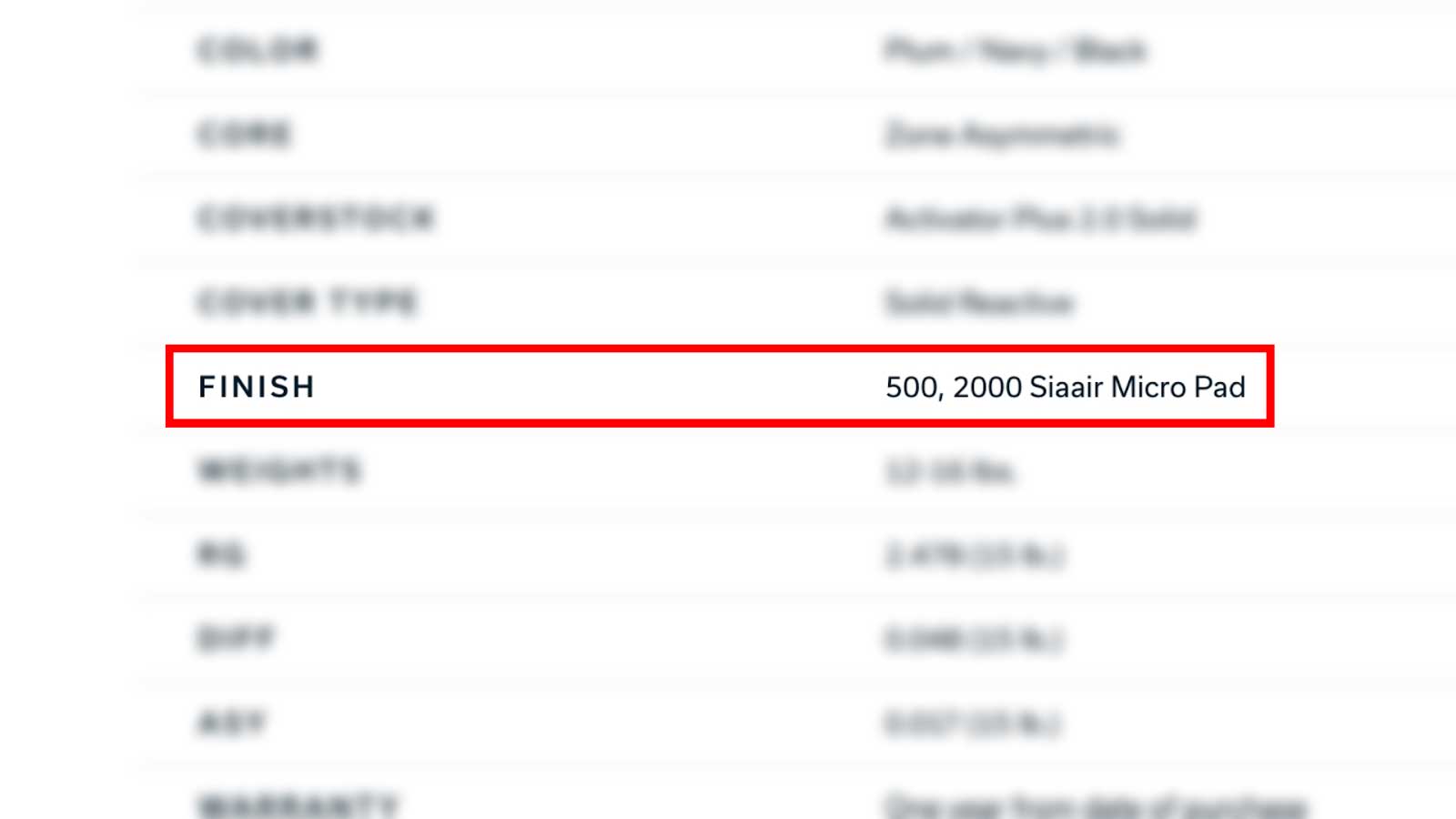
In this example, there are two grit numbers, 500 and 2000. In order to obtain a 2000 grit finish, the manufacturer had to apply surface to the bowling ball twice, first with 500, next with 2000.
To begin, start by sanding half of the bowling ball on the sides and the top twice.
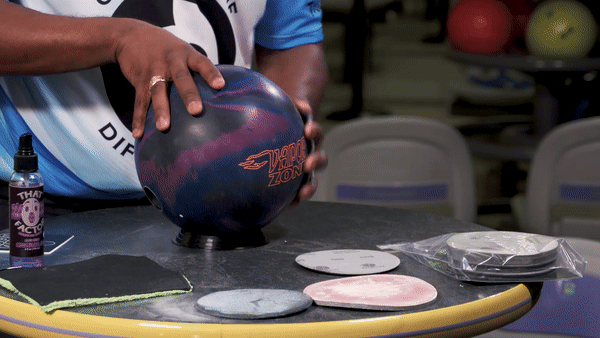
Next, flip the ball over and repeat the process.
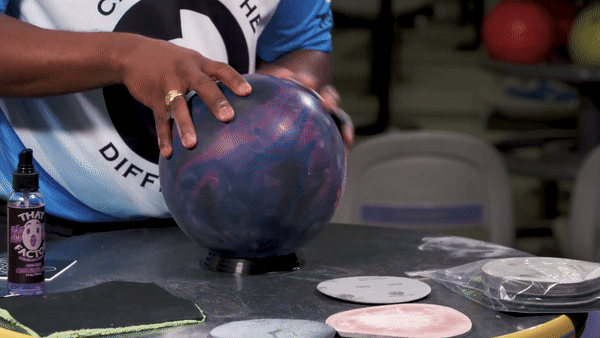
Finally, clean the bowling ball using a cleaner to remove the dust from the surface.
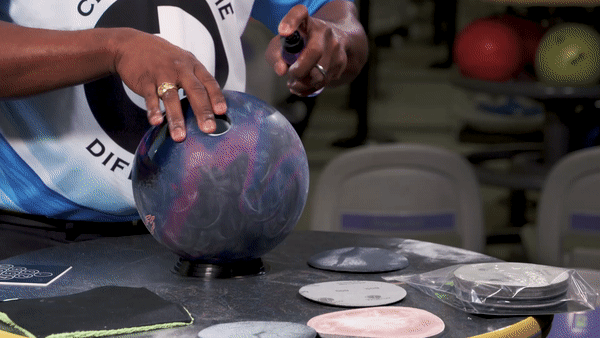
Per USBC rules, if you are going to sand your bowling ball, you must hit the entire bowling ball surface. Remember, this can only be done before or after competition.
You can choose lower-grit sanding pads to make your ball hook earlier and higher-grit sanding pads to delay its hook on the lane.
For more information on controlling the breakpoint check out our video on different surfaces and see for yourself how much different the bowling ball reacts between grits.

When sanding the ball, we would use 500 first, than use 2000 or could we just use 2000 grit?
I have my bowlers who I coach, to wipe the oil off the ball with a towel after each shot. In addition, I remind bowlers never leave your howling balls in the trunk of your car during the winter months. Good luck and remember to practice, practice, for best results. Stan S
What Products do you recommend they were all kinds of cleaners out there and I haven’t found one that I like